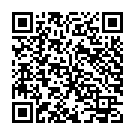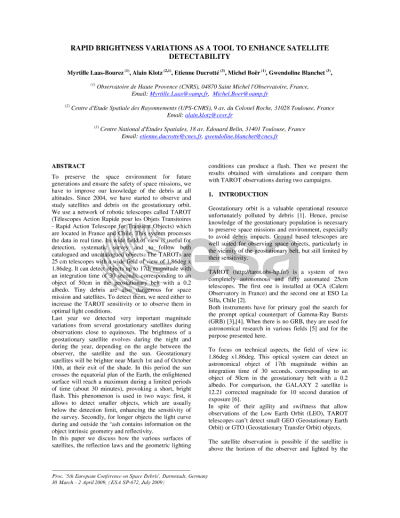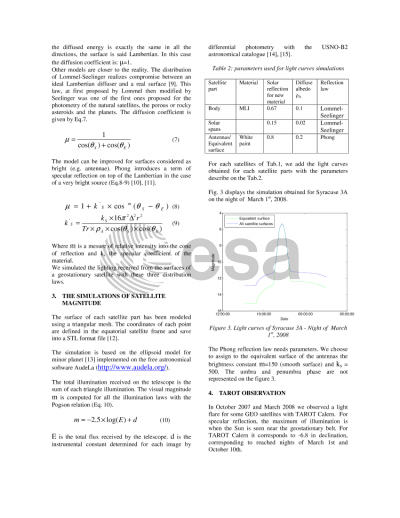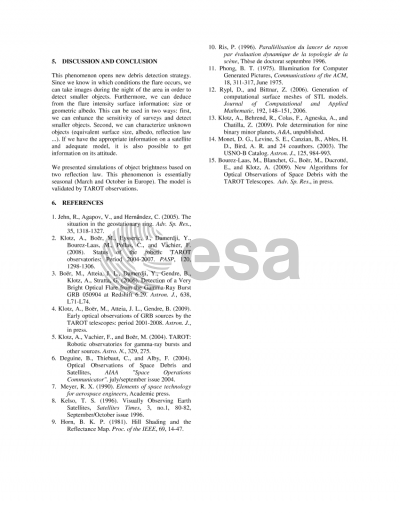Document details

Abstract
To preserve the space environment for future generations and ensure the safety of space missions, we have to improve our knowledge of the debris at all altitudes. Since 2004, we have started to observe and study satellites and debris on the geostationary orbit. We use a network of robotic telescopes called TAROT (Télescopes Action Rapide pour les Objets Transitoires - Rapid Action Telescope for Transient Objects) which are located in France and Chile. This system processes the data in real time. Its wide field of view is useful for detection, systematic survey and to follow both catalogued and uncatalogued objects. The TAROTs are 25 cm telescopes with a wide field of view of 1.86deg x 1.86deg. It can detect objects up to 17th magnitude with an integration time of 30 seconds, corresponding to an object of 50cm in the geostationary belt with a 0.2 albedo. Tiny debris are also dangerous for space mission and satellites. To detect them, we need either to increase the TAROT sensitivity or to observe them in optimal light conditions.Last year we detected very important magnitude variations from several geostationary satellites during observations close to equinoxes. The brightness of a geostationary satellite evolves during the night and during the year, depending on the angle between the observer, the satellite and the sun. Geostationary satellites will be brighter near March 1st and of October 10th, at their exit of the shade. In this period the sun crosses the equatorial plan of the Earth, the enlightened surface will reach a maximum during a limited periods of time (about 30 minutes), provoking a short, bright flash. This phenomenon is used in two ways: first, it allows to detect smaller objects, which are usually below the detection limit, enhancing the sensitivity of the survey. Secondly, for longer objects the light curve during and outside the °ash contains information on the object intrinsic geometry and reflectivity. In this paper we discuss how the various surfaces of satellites, the reflection laws and the geometric lighting conditions can produce a flash. Then we present the results obtained with simulations and compare them with TAROT observations during two campaigns.
Preview







